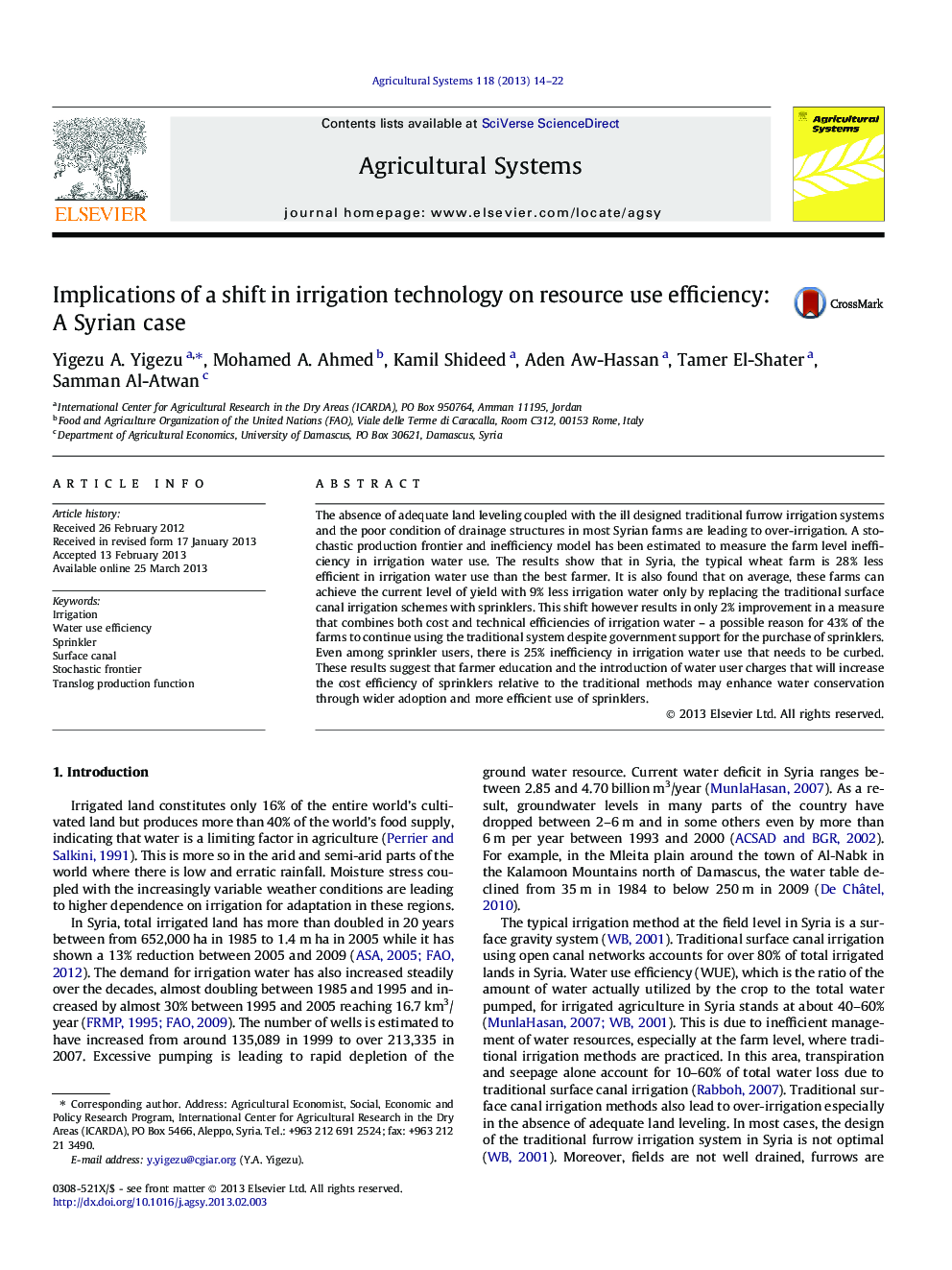| Article ID | Journal | Published Year | Pages | File Type |
|---|---|---|---|---|
| 4491320 | Agricultural Systems | 2013 | 9 Pages |
The absence of adequate land leveling coupled with the ill designed traditional furrow irrigation systems and the poor condition of drainage structures in most Syrian farms are leading to over-irrigation. A stochastic production frontier and inefficiency model has been estimated to measure the farm level inefficiency in irrigation water use. The results show that in Syria, the typical wheat farm is 28% less efficient in irrigation water use than the best farmer. It is also found that on average, these farms can achieve the current level of yield with 9% less irrigation water only by replacing the traditional surface canal irrigation schemes with sprinklers. This shift however results in only 2% improvement in a measure that combines both cost and technical efficiencies of irrigation water – a possible reason for 43% of the farms to continue using the traditional system despite government support for the purchase of sprinklers. Even among sprinkler users, there is 25% inefficiency in irrigation water use that needs to be curbed. These results suggest that farmer education and the introduction of water user charges that will increase the cost efficiency of sprinklers relative to the traditional methods may enhance water conservation through wider adoption and more efficient use of sprinklers.
► By shifting to sprinklers, farmers can obtain their current yields with 9% less irrigation water. ► The typical farmer exhibits 28% less efficiency than the best irrigation water user in the group. ► Even among sprinkler users, there is 25% inefficiency that needs to be curbed. ► The marginal gain in cost efficiency may explain the low adoption rate of sprinklers. ► Introduction of water user charges may enhance adoption of sprinklers.
